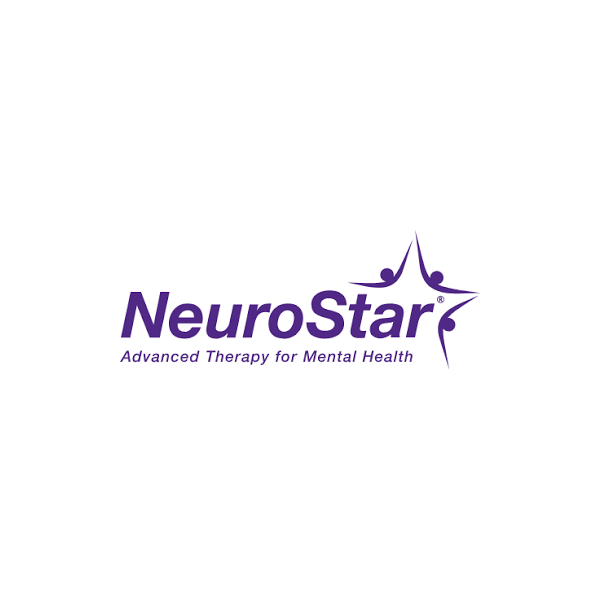Nostrud exerctation to ullamco laibor nisiod in above murli aliquip commodo
Nostrud exerctation to ullamco laibor nisiod in above murli aliquip commodo
Nostrud exerctation to ullamco laibor nisiod in above murli aliquip commodo

NeuroStar uses transcranial magnetic stimulation (TMS) to target key areas of the brain that are underactive in people with depression. It is not ECT (electroconvulsive therapy).
While the exact cause of depression is not known, the leading scientific theory is that it is caused by an imbalance of the brain’s neurotransmitters, which are chemical messengers that send signals between brain cells.
Complete this PhQ10 to see if you are eligible:
NeuroStar is an advanced way to treat depression. Neurostar is the #1 TMS choice of doctors,. with over 6.1 million treatments performed to date. TMS is acknowledged as a safe and efficacious non-pharmacological intervention for depression, and is covered by most major insurance plans. This modality employs a targeted pulsed magnetic field akin to that utilized in magnetic resonance imaging (MRI) to stimulate hypoactive brain regions associated with depression. It is particularly beneficial for individuals who have been unresponsive to previous pharmacotherapy and seek alternative non-systemic approaches for treating Major Depressive Disorder.
The Neurostar Advanced Therapy system is also FDA approved to treat those with anxious depression and as adjunctive treatment for Obsessive Compulsive Disorder (OCD). The newest FDA approved indication is to treat Adolescent Depression, ages 15 and up.
NeuroStar Advanced Therapy is only available by prescription. A doctor can help decide if NeuroStar Advanced Therapy is right for you. Patients’ results may vary.
During a NeuroStar treatment session, a magnet similar in strength to that used in a magnetic resonance imaging (MRI) machine is used to stimulate nerve cells in the area of the brain thought to control mood. These magnetic pulses may have a positive effect on the brain’s neurotransmitter levels, making long-term remission possible.
• Therapy sessions are conducted in your NeuroStar doctor’s office• • You can return to normal activities right away•• You are awake during treatment• • There are no negative effects on memory or sleep• • It’s covered by most health insurance plans, including Medicare and Tricare
With more than three million treatments delivered, this novel treatment approach to achieving remission is bringing new hope to people every day.
Transcranial magnetic stimulation (TMS) uses a targeted pulsed magnetic field, similar to what is used in an MRI (magnetic resonance imaging) machine.
While the patient is awake and alert, TMS Therapy stimulates areas of the brain that are underacting, causing anxiety, compulsive and obsessive thinking and that can result in OCD. TMS is generally safe and well tolerated; its most serious risk is seizure, which occurs very rarely.
Here’s what you can expect from a NeuroStar Advanced Therapy (TMS) session:
You’ll recline comfortably in the treatment chair. A small, curved magnetic coil will be positioned lightly on your head.
NeuroStar delivers focused magnetic stimulation directly to the target areas of the brain. You’ll hear a clicking sound and feel a tapping sensation on your head.
NeuroStar Advanced Therapy: Depending on your doctor’s recommendation, each treatment takes between 19 and 37 minutes.
Because there are no effects on alertness or memory, you can drive yourself to and from treatment sessions.
In-office treatment with NeuroStar TMS Therapy typically takes 19-37 minutes and is administered 5 days a week for approximately 4-6 weeks.*

Transcranial Magnetic Stimulation (TMS) for Major Depression: A Multisite, Naturalistic, Observational Study of Acute Treatment Out- comes in Clinical Practice. Depression and Anxiety, 29(7):587-596. www.ncbi.nlm.nih.gov/pubmed/22689344

Daily Left Prefrontal Transcranial Magnetic Stimulation Therapy for Major Depressive Disorder: A Sham-Controlled Randomized Trial. Arch Gen Psychiatry, 67(5):507-516. www.ncbi.nlm.nih.gov/pubmed/20439832

A Multisite, Naturalistic, Observational Study of Transcra- nial Magnetic Stimulation (TMS) for Patients with Pharmacoresistant Major Depres- sive Disorder: Durability of Benefit Over a 1-Year Follow-Up Period. J Clin Psychiatry. 75(12):1394-1401. www.ncbi.nlm.nih.gov/pubmed/25271871

Efficacy and Safety of Transcranial Magnetic Stimulation in the Acute Treatment of Major Depression: A Multisite Randomized Controlled Trial. Biol Psychiatry, 62(11):1208-1216. www.ncbi.nlm.nih.gov/pubmed/17573044

The thousands of people who have benefited from NeuroStar® Advanced Therapy were once in the same position you are today.
After choosing NeuroStar, their lives were transformed. Their stories may help you decide if NeuroStar could be right for you.
TMS treatment approach to achieving remission is to bring new hope and strength to live a better life.
A few real life clients have shared their experiences below:
Transcranial magnetic stimulation, often referred to as TMS is a noninvasive procedure that uses magnetic fields to stimulate nerve cells in the brain to improve symptoms of depression. TMS is typi- cally used when antidepressant medications haven’t been effective, have ceased working, or as an alternative to medication.
TMS involves delivering magnetic pulses to specific parts of the brain.
A typical initial course of treatment is about 19-37 minutes daily over 4-6 weeks.
A vast majority of commercial and Medicare plans have recognized the effectiveness of treating de- pression with TMS Therapy and now cover TMS as part of their plans.
TMS does not circulate in the blood throughout the body, so it does not have side effects like weight gain, sexual dysfunction, nausea, dry mouth, sedation, etc. The most common side effects reported during clinical trials were headache and scalp discomfort —generally mild to moderate—occurring less frequently after the first week of treatment.
No. TMS Therapy involves a unique method of using pulsed magnetic fields for a therapeutic benefit. The intensity of the magnetic field is similar to that of an MRI. These techniques differ radically from the popular use of low intensity, static magnetic fields. Those products deliver weak and undirected static fields that are not capable of activating brain cells. The activation and stimulation of brain cells is a key part of why TMS is so effective.
